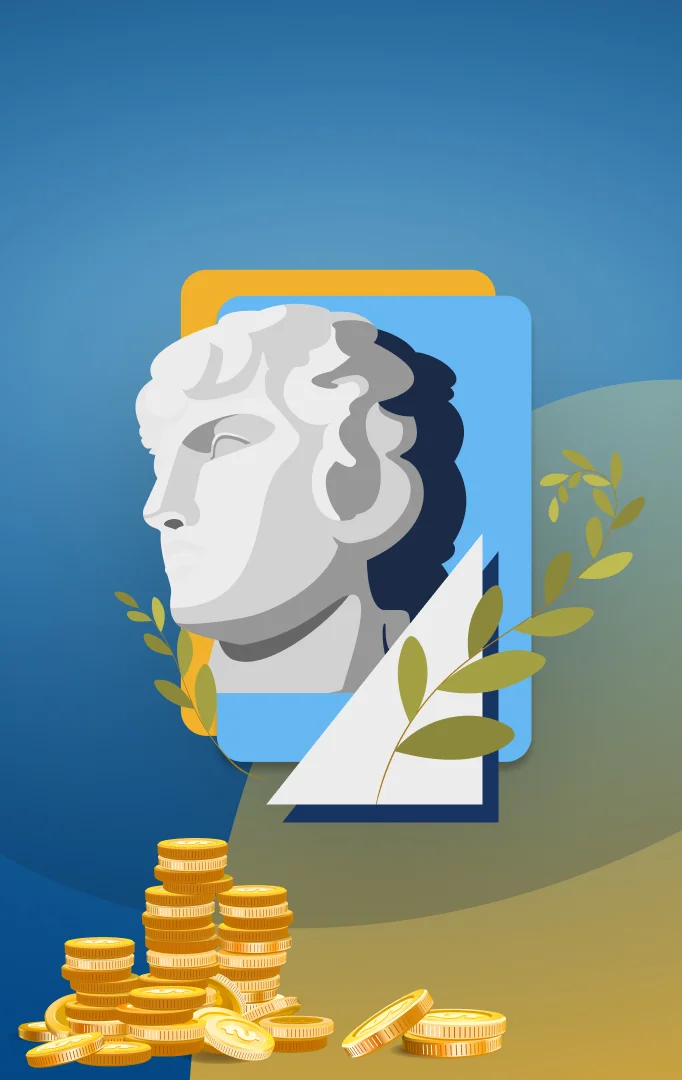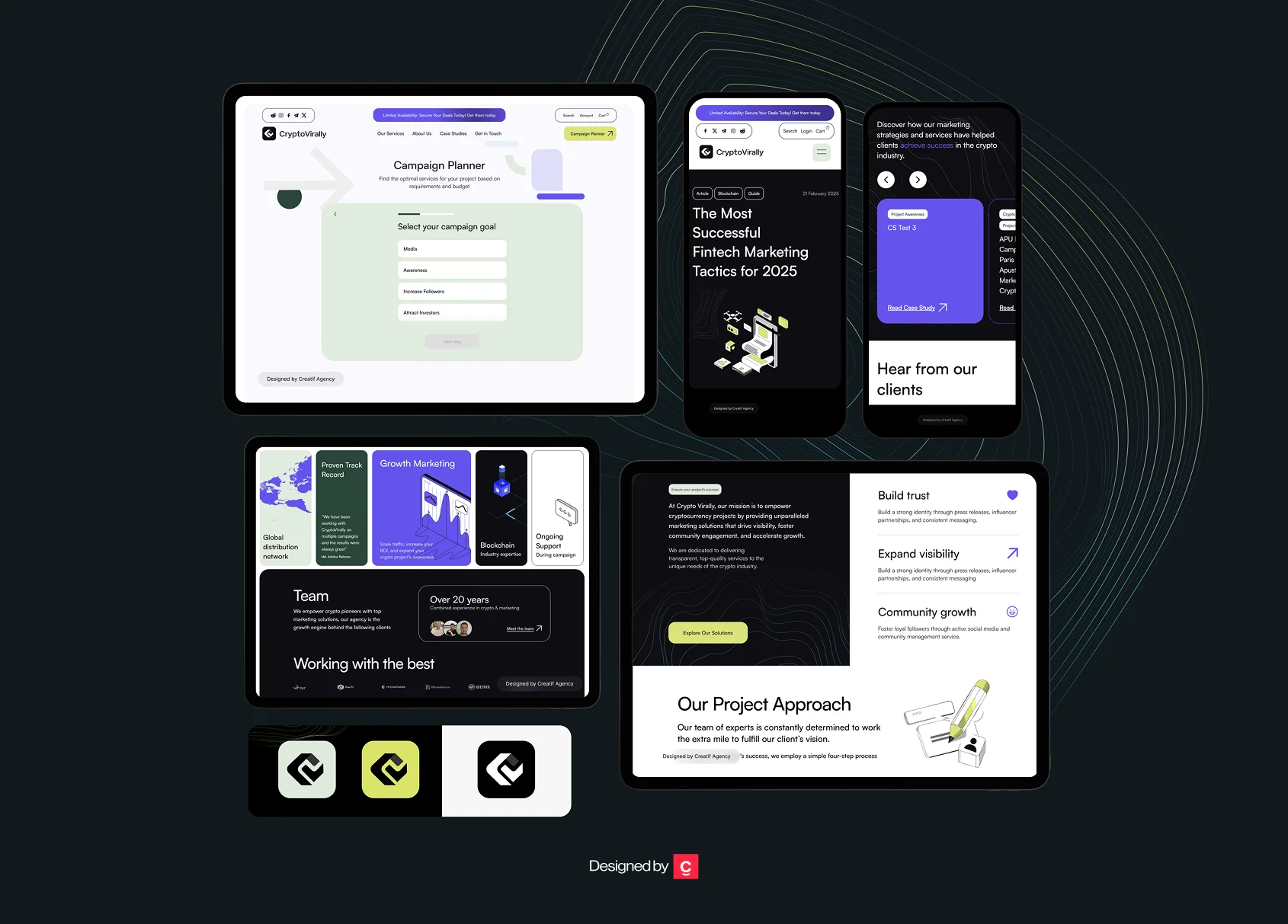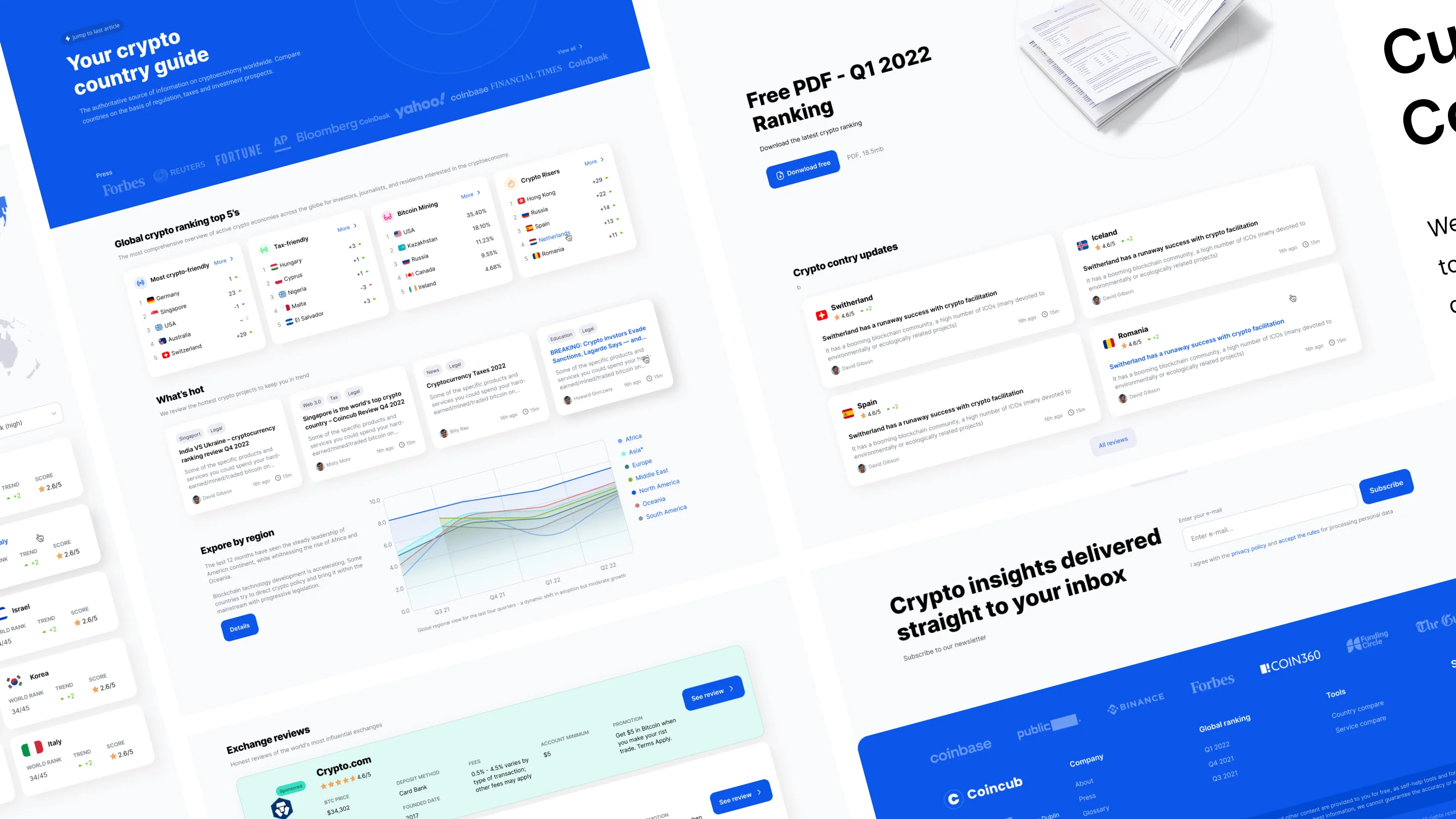Crypto Web Design? A Beginner’s Guide to Designing for Web3
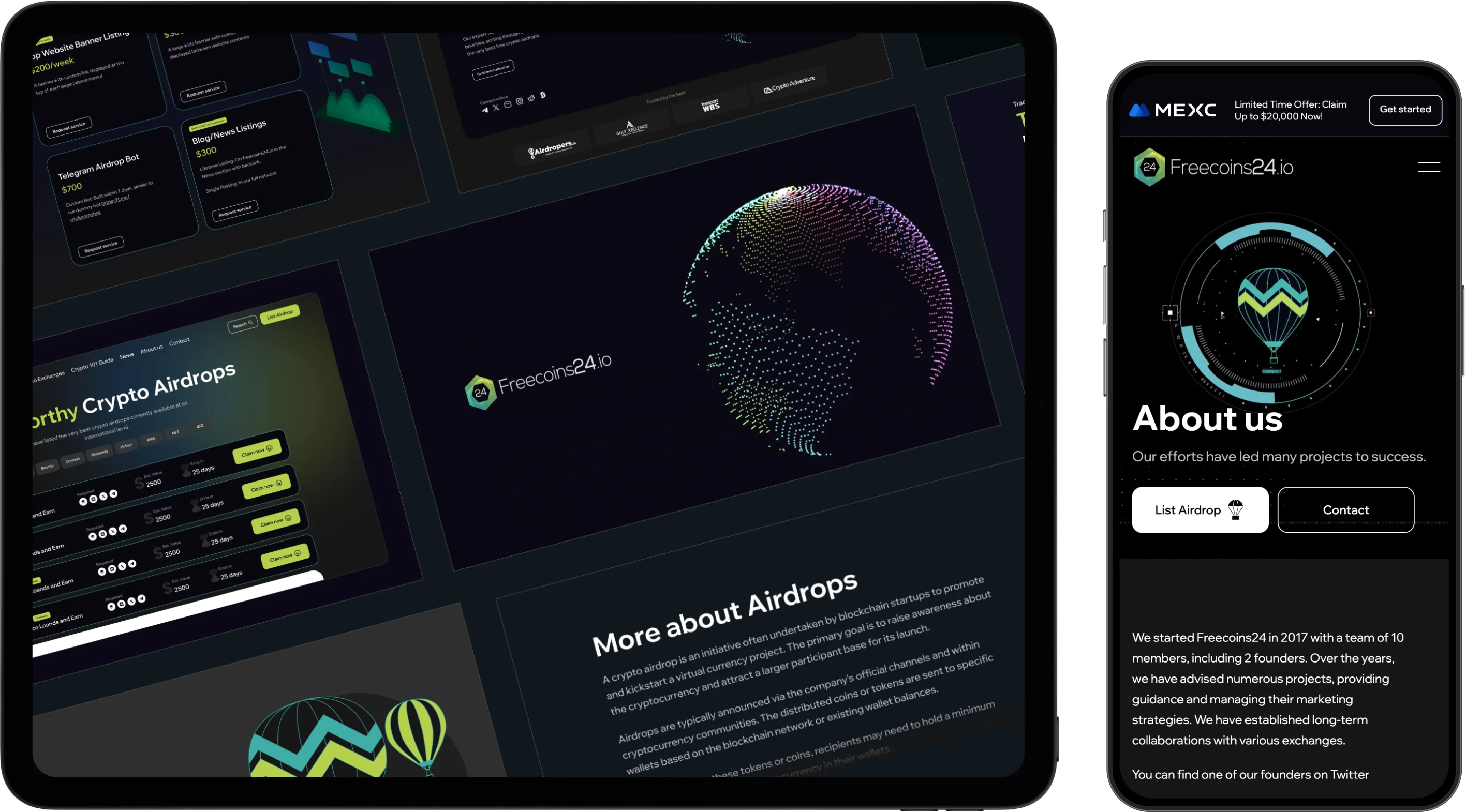
Innovative Web Design & Branding Services for businesses
Let's discuss your project
The internet is evolving, and with it, the way we design and interact with websites. For years, web design has primarily focused on Web2—a centralized internet where platforms like Facebook, Google, and Amazon control most of the data and user experience. But a new era is dawning: Web3, powered by blockchain technology, promises a decentralized, user-owned internet. And with this shift comes an entirely new approach to web design.
So, what exactly is “crypto web design,” and how does it differ from traditional web design? If you’re a business, a startup, or even an individual looking to build in the decentralized space, understanding these distinctions is crucial for creating an effective and future-proof online presence.
What is Crypto Web Design? A Beginner’s Guide to Designing for Web3.
Beyond Aesthetics: Web2 vs. Web3 Web Design
At its core, traditional Web2 web design emphasizes visual appeal, intuitive navigation, and efficient information delivery. Think sleek layouts, compelling calls to action, and seamless mobile responsiveness. These elements are still important in Web3, but crypto web design introduces a new layer of complexity and functionality.
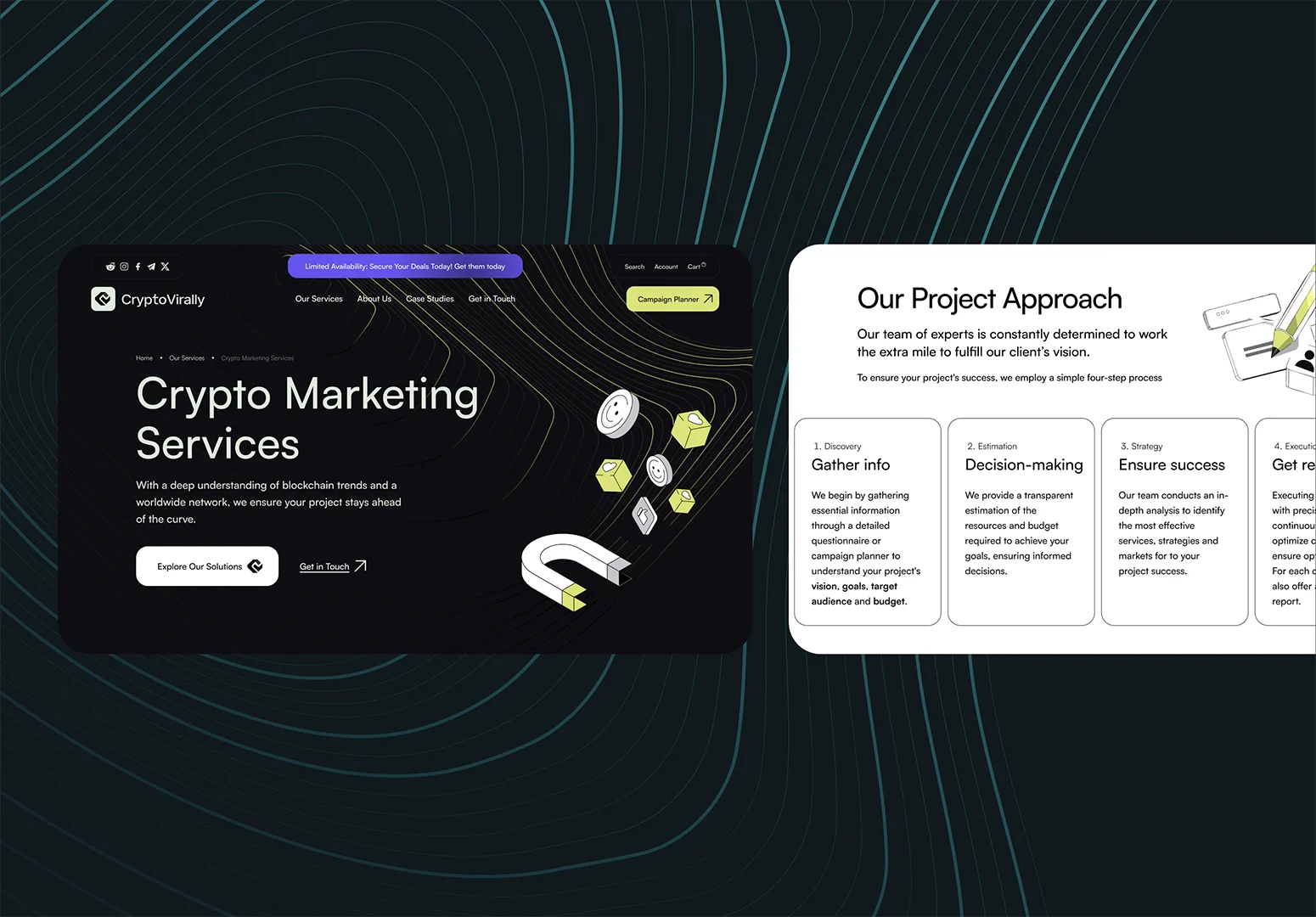
Web2 Web Design Focuses On:
- Centralized Servers: Data stored and managed by a single entity.
- User Experience (UX) & User Interface (UI): Smooth interactions, clear information architecture, and visual appeal.
- Conversion Optimization: Driving sales, sign-ups, or leads.
- Client-Server Architecture: Users interact with a server that hosts the website.
Crypto Web Design (Web3) Adds:
- Decentralization: Leveraging blockchain to distribute data and functionality across a network, reducing reliance on single points of control.
- Smart Contracts Integration: Websites interact directly with self-executing contracts on a blockchain, enabling trustless transactions and automated processes.
- Wallet Connectivity: Users connect their cryptocurrency wallets (e.g., MetaMask, WalletConnect) directly to the website, enabling transactions, identity verification, and interaction with dApps (decentralized applications).
- Tokenomics & NFTs: Design often incorporates elements for displaying, trading, or interacting with fungible tokens (cryptocurrencies) and non-fungible tokens (NFTs).
- Enhanced Security & Transparency: Design needs to clearly communicate the security measures in place and leverage the inherent transparency of blockchain.
- Community & Governance: Often incorporates features for decentralized autonomous organizations (DAOs), allowing token holders to vote on proposals and shape the project’s future.
- Data Ownership: Empowering users with more control over their data, moving away from centralized data harvesting.
Key Elements of Effective Crypto Web Design

Designing for Web3 isn’t just about adding a “Connect Wallet” button. It requires a fundamental shift in thinking. Here are some key elements that define effective crypto web design:
- Wallet Integration as a Core Feature: Unlike traditional logins, wallet connection is the gateway to Web3 functionality. The design must make this process clear, secure, and user-friendly. This includes supporting multiple wallet options and providing clear instructions for first-time users.
- Clarity and Trust in a Complex Space: The crypto world can be intimidating. A well-designed crypto website simplifies complex blockchain concepts, explains technical terms clearly, and builds trust through transparent communication about security, smart contracts, and project goals. Visuals that convey security and cutting-edge technology are also paramount.
- Community-Centric User Flow: Crypto projects live and die by their community. Your website’s design should facilitate community engagement, whether through links to social channels (Discord, Twitter), governance portals for DAOs, or clear information on how to participate.
- Emphasis on Security and Transparency: Your design must visually and textually reinforce trust. This includes using clear security badges, linking to smart contract audits, and providing transparent information about the team and project roadmap. A sense of security is non-negotiable for a crypto audience.
- Performance and Speed: Web3 applications can be data-heavy, so your design must be highly optimized for performance. A slow-loading crypto website can be perceived as an insecure or poorly managed project.
Why You Can’t Afford to Ignore Crypto Web Design
The rise of decentralized finance (DeFi), NFTs, and the broader Web3 ecosystem means that a one-size-fits-all approach to web design is no longer viable. Companies and startups entering this space need a digital presence that is not only visually compelling but also functionally integrated with blockchain technology.
Crypto web design is not just a trend; it’s a specialized discipline that requires an understanding of both design principles and the technical intricacies of decentralized networks. By focusing on security, user education, and seamless wallet integration, you can build a digital experience that stands out, builds trust, and is ready for the future of the internet.
How useful was this post?
Click on a star to rate it!
Average rating 5 / 5. Vote count: 1
No votes so far! Be the first to rate this post.
Home  Crypto Web Design
Crypto Web Design  Crypto Web Design? A Beginner’s Guide to Designing for Web3
Crypto Web Design? A Beginner’s Guide to Designing for Web3



